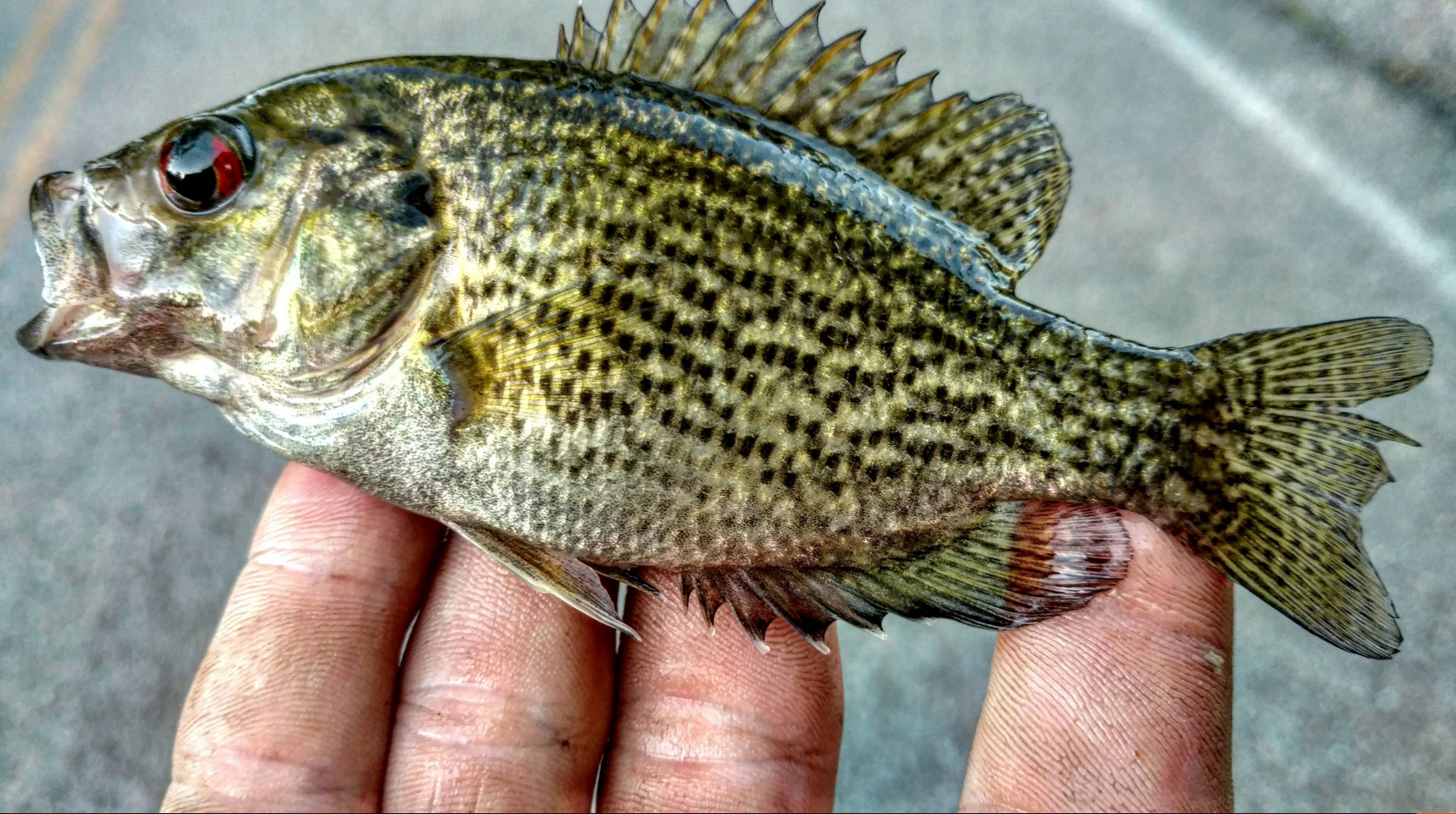Primary Spawn: Late May through July (peak: early to mid-June) when water temperatures reach 60-70°F; optimal spawning occurs at 63-68°F; spawn timing typically 1-2 weeks after bluegill but before pumpkinseed; one of the earlier spawning sunfish species
Spawning Habitat: Shallow rocky or gravel areas in 2-6 feet of water; prefer areas with some protection from wind and waves; gravel, rubble, or coarse sand bottom adjacent to deeper water; around boulders, logs, and rocky structure; will use riprap, dock pilings, and man-made rocky areas; cleaner substrate preferred over silty areas; often nest in loose colonies with multiple males nesting in proximity
Reproductive Behavior: Pre-spawn (May): As water temperatures reach 55-60°F, rock bass move from deeper wintering areas to shallow spawning grounds; males arrive first and begin selecting nest sites; females stage in nearby deeper water (8-15 feet) feeding heavily; excellent pre-spawn fishing period
Nest Building: Male selects site in rocky or gravel area; fans out circular depression 10-15 inches in diameter using tail sweeps; clears loose debris and silt exposing clean gravel, sand, or rock; nest smaller than largemouth/smallmouth bass nests but similar to other sunfish; construction takes 1-3 days; males become increasingly territorial as nest completion approaches
Courtship and Spawning: Male develops darker, more intense coloration during spawning; female approaches nest when ready; male performs courtship display including fin spreading and circling behavior; female settles onto nest and deposits 3,000-11,000 eggs in multiple clusters; male immediately fertilizes eggs; spawning act occurs in multiple episodes over 1-2 hours; female may spawn with single male or visit multiple nests; larger, older females produce more eggs
Post-Spawn Male Behavior: Male remains on nest providing extensive parental care; continuously fans eggs with tail and pectoral fins providing oxygen and preventing silt accumulation; guards nest aggressively attacking any intruders including much larger fish, crayfish, other sunfish; readily strikes lures—makes rock bass easy to catch during spawn; does not feed during nest-guarding period of 7-14 days; loses significant body condition during guard period; fans eggs for 2-4 days until hatching; continues guarding fry for additional 5-10 days after hatching—longer than most sunfish; fry form tight school hovering near nest; male abandons fry when they disperse
Post-Spawn Female Behavior: Females leave nest area immediately after spawning; move to nearby deeper water to recover; resume feeding within days; gradually return to normal summer patterns around rocky structure
Egg and Fry Development: Eggs hatch in 2-4 days depending on water temperature (faster in warmer water); newly hatched fry are 2-3mm long with attached yolk sac; fry remain in nest depression feeding on yolk sac for 3-5 days; become free-swimming after yolk absorption; initially form tight school under male protection; after male abandons, fry disperse into rocky crevices and vegetation edges; feed on microscopic zooplankton initially; at 1/2 inch begin eating small insect larvae; at 1 inch start consuming small crayfish; rapid growth first year; males reach sexual maturity at 2-3 years (5-7 inches); females mature at 3-4 years (6-8 inches)
Nest Site Fidelity: Males may return to same general spawning areas in subsequent years; successful colony sites used repeatedly by different individuals
Multiple Spawning: Rock bass may spawn multiple times in a season if conditions remain favorable and nest is destroyed; extended spawning period (4-6 weeks) increases recruitment success

